by Bill Poole | Oct 1, 2025 | Sales, Strategy
Why You Need a Scalable Message (Even If You’re Not “Doing Sales”)
You’ve grown your business through expertise, relationships, and results.
You’re not making cold calls, and you may not even think of yourself as a salesperson.
But the truth is, sales still depends on you.
Whether you’re stepping into deals, managing the team, or being the only one who can clearly explain your value, you’re still in the sales seat. Until you step out of that role, the business can’t scale and it won’t be ready to sell.
The Hidden Sales Bottleneck
Many founders think they’ve delegated sales, but when they step away, results often stall.
The problem isn’t effort. It’s messaging.
Specifically, your message isn’t scalable yet.
When only you can tell the story, only you can sell. That limits growth and puts your valuation at risk.
What Is a Scalable Message?
A Scalable Message is a story the whole business can share with clarity and consistency.
It’s not just a tagline or a slide deck. It’s the foundation of your go-to-market strategy: what you say, who you say it to, and why it matters.
It includes:
- Ideal Client Profile (ICP): Who you’re built to serve (and who you’re not)
- Value Story: A narrative that resonates with prospects, told in their language
- First Step Offer: A simple, low-friction way to engage and build trust with both prospects and referral partners
When your message is scalable, your team can sell with confidence. Marketing becomes more effective. And the business stops relying on you to make the case.
When the Message Isn’t Scalable
If the message only lives in the founder’s head, things start to break down—even if you’ve hired salespeople.
- Sales cycles stall or go off track. Reps don’t know how to position the offer, so they either lean on price or use vague generalities that don’t close deals.
- The wrong opportunities show up. Referral partners, marketing, or even your team aren’t aligned on who your ideal client is.
- New sales hires fail. Without a clear and tested message, salespeople struggle to ramp up, and hiring turns into an expensive cycle of turnover.
- The founder gets pulled back in. Because only the founder can close, they remain stuck in the sales seat or become the bottleneck.
- Valuation suffers. Investors or acquirers discount businesses where growth still depends on the founder.
The Payoff of Getting It Right
A scalable message doesn’t just make sales easier. It makes growth possible.
With a scalable message, you can:
- Equip your team to sell consistently and confidently
- Attract the right clients through focused marketing and referrals
- Support a sales hire or team that can succeed without your involvement
- Build enterprise value and improve exit readiness
- Free up your time to focus on growth, strategy, or succession
Want to Know Where You Stand?
You don’t need a full audit. Just a quick checkup. Take our Sales Readiness Checkup here.
Book a Call to Review Your Sales Readiness Checkup
This free 10-minute assessment gives you a snapshot of how well your current sales system supports scale and where your message may be holding you back. Once you’ve completed it, we’d love to talk through your actionable next steps with you.
In our review session with you, we’ll walk through:
- Where messaging may be creating drag
- Simple next steps, whether you do it yourself or work with us
If you’re looking to scale or prepare for exit, this is the place to start.
Book Your Checkup Review

by Bill Poole | Sep 15, 2025 | Sales, Strategy
Why revenue struggles might not be a sales problem and what to do instead
When revenue slows down or growth plateaus, it’s natural to look at your sales team (or lack thereof) and think, “We need to fix sales.”
But not every revenue problem is a sales problem.
Often, what feels like a sales bottleneck is something deeper: a lack of clarity about the market you serve, the value you deliver, or the message you put out. And if you throw a salesperson into that confusion, you’re not solving the problem. You’re just making it more expensive.
A Costly Misstep: A Real-Life Example
A couple of years ago, we worked with a sharp founder who ran a successful custom software development firm. His team built SaaS platforms, mobile apps, and system integrations, and they did it well. The company had grown through hustle, referrals, and a solid track record in the healthcare space.
Eventually, growth leveled off. The founder had ambitious goals and knew he needed a more scalable way to grow. He also wanted to be in a position to sell the business someday, and he knew that buyers don’t place much value on companies that depend on the founder to drive all new revenue.
So he reached out for help.
We helped him clarify his Ideal Client Profile (ICP), refine his message, and build a sales system anchored in strategic partnerships. He was especially strong in healthcare, and while hesitant to focus too narrowly, he agreed to lean in. Then he made a sales hire to run the system.
And right after that… he pivoted.
He had just wrapped development on a niche software product he’d been building quietly for some time, and he decided to shift the entire business toward selling that product instead of custom development.
The result?
The sales system, messaging, ICP, and the expensive hire were all misaligned with the business strategy. Not intentionally, but the consequences were real.
The most costly mistake wasn’t the pivot. It was hiring a salesperson before confirming that the go-to-market strategy was clear and committed.
The Hidden Trap: Solving the Wrong Problem
This happens more often than you’d think.
On the surface, it looks like sales isn’t working. But what’s really broken is market clarity.
Some warning signs:
- The team isn’t aligned on who your best-fit clients are.
- Wins feel like one-offs rather than repeatable patterns.
- Your message doesn’t land, or prospects don’t “see themselves” in it.
- New reps struggle to gain traction, or can’t reproduce your success.
These aren’t sales execution issues.
They’re focus issues.
And no amount of hustle or sales talent can overcome that.
What Predictable Revenue Really Requires
The best closers in the world can’t create consistent results if they’re selling the wrong thing, to the wrong people, with a muddled message.
Here’s what needs to be true before a sales hire will succeed:
- A clearly defined Ideal Client Profile
Everyone on your team, not just sales, should know who your business is for and who it’s not.
- An offer that solves a real, painful problem
One that your clients value, buy repeatedly, and talk about.
- A message that resonates
It should cut through the noise and make prospects say, “Yes, that’s me.”
- A go-to-market strategy your team can align with
If you change your strategy every few months, you’re not ready to scale it.
When these pieces are in place, sales becomes scalable.
When they’re not, hiring salespeople becomes a costly experiment.
Ask Yourself: Is Sales the Bottleneck — or Is It Something Deeper?
Here are a few questions to help you find out:
- Do we know exactly who we’re trying to attract and why they buy from us?
- Are our wins consistent and repeatable?
- Does our message clearly connect with the right people?
- Could we plug someone else into our current sales system and expect success?
If you’re not answering “yes” to most of those, you may not have a sales problem.
You may have a strategy problem, and that’s the first thing to solve.
The Good News? You Can Fix This
Clarity is something you can build. You can:
- Tighten your ICP.
- Talk to your best clients.
- Refine your messaging and story.
- Align your go-to-market strategy before you scale it.
And once that foundation is strong, then it’s time to make the hire.
✅ Want to Know If You’re Truly Ready?
Take our Sales Readiness Checkup, a short, practical tool designed to help you assess whether you’re actually ready to hire, or if there are some foundational steps to take first.
You’ll walk away with a clear view of:
- What’s working
- What’s missing
- And how to fix it
👉 Take the Checkup Now

by Bill Poole | Jul 9, 2025 | Sales, Strategy
Your Referral Engine Isn’t Dead—It’s Idling
You’ve built a thriving company on relationships and reputation.
But lately, you’ve noticed something unsettling:
- Your aggressive growth targets loom larger than the steady trickle of warm introductions.
- Tactical marketing agencies promise a flood of leads—Google Ads, LinkedIn AI automations, the latest “demand-gen hack.”
- You test one or two. The leads arrive…and most are a mismatch. Qualifying them soaks up your team’s time. When you pause the spend, the faucet shuts off.
Sound familiar? You’re not alone.
The Pattern We See All the Time
- Early Momentum
You leaned on friends, colleagues, and a handful of A-list partners. Referrals flowed, deals closed, life was good.
- The Plateau & Panic
Growth targets rise. Referrals feel “tapped out,” so you hunt for quick wins—often expensive ads or automation playbooks frothed up on social media.
- The Cold-Lead Grind
Clicks spike, but conversations stall. You realize most strangers have no real need—or budget—for what you do best. Worse, if you cut spend, the pipeline dries up overnight.
- The Realization
You now carry two problems: non-performing marketing costs and an under-leveraged network
A Real-World Example: The Shift To An Intentional Referral System
An investment bank we work with relies on 20-30 elite attorneys, CPAs, and wealth managers for nearly every deal. The business was solid, but their new three-year plan called for doubling revenue.
They took a three-pronged approach to increase lead flow:
- Shifted to a more intentional approach to managing their “A-List” referral partners
- Investing in marketing the right way, with a content-driven, help-first approach to build trust, which both supported the intentional referral approach and generated some leads
- Added a human element to the top funnel by complementing the marketing with some outbound sales targeting
The results? Within six months, their previously bare pipeline ballooned, and they are now positioned for the 2nd half of the year.
Why Intentional Referrals Beat Reactive Ads
| Reactive Lead Gen |
Intentional Referral System |
| Expensive “pay-to-play” |
Low cost, relationship-driven |
| Leads disappear when spend stops |
Compounds over time |
| High qualification effort |
Pre-qualified, trust-based |
| Tactical, siloed |
Strategic, integrates with marketing |
Smart marketing is still vital—brand assets, SEO, content..all of these add equity to your firm. But a dialed-in referral system funds those long-term plays and keeps your pipeline healthy while they mature.
Three Questions to Ask Yourself Today
- Do my best partners know exactly who I want to meet and why it matters to them?
- Do I deliver predictable, calendar-based value to each connector?
- Can I trace last quarter’s revenue back to specific partners and activities?
If any answer is “no” (or “not sure”), there’s untapped growth sitting in your network.
Ready to Assess Your Referral Approach?
Download the Referral System Self-Assessment and get a crystal-clear score on:
- Partner segmentation and prioritization
- Value-add cadence
- Enablement assets
- Measurement and optimization
It’s the fastest way to see where simple tweaks could unlock your next wave of high-value introductions.
Grab the self-assessment now!
You don’t need another silver-bullet ad campaign. You need to tune the engine you already own. Start with your referral system and let marketing amplify, not replace, what’s been working for you since day one.

by Bill Poole | Jun 18, 2025 | Sales, Strategy
Note: This is a story built from real patterns we see all the time in entrepreneurial, service-based businesses. Sales leaders are under pressure, coaching is inconsistent, and referrals aren’t producing like they should. The good news? The technology now exists to solve these problems — and do it in a practical, people-first way.
When Taylor, the Integrator at a 25-person B2B services firm, sat down for their Q1 Clarity Break, one problem kept swirling: the sales team wasn’t scaling with the rest of the company.
They had grown steadily over the past two years — strong operations, reliable delivery, and a few rockstar client wins had moved the business forward. But sales? It was messy. Coaching happened here and there, but not predictably. New reps weren’t ramping quickly. And their best rainmaker seemed to be running on instinct more than process.
Taylor didn’t want to throw more headcount at the problem. That wasn’t how they thought. They needed leverage — and they found it in an unexpected place: AI-powered sales coaching.
The Real Problem: Sales Coaching Without Structure
Taylor’s sales leader, Jordan, was experienced and driven. But even Jordan admitted their approach was reactive:
“I’m spending more time trying to figure out what happened in deals than actually helping reps close the next one.”
Reps were sent to occasional trainings, and call shadowing happened “when possible.” But with no clear view into how reps were selling, most coaching was gut feel — not system-driven.
And it wasn’t just coaching that lacked structure. Jordan had also recently rolled out a referral initiative — encouraging reps to “work their networks” and “ask for introductions.” The effort had good intent but lacked focus. The result? Too many reps chasing too many weak connectors.
They needed something better — a way to develop salespeople intentionally and build high-value referral pipelines with purpose.
AI Turns Every Sales Interaction into Coaching Fuel
That’s when Taylor and Jordan decided to pilot a few lightweight AI tools. Nothing crazy — just tools that could help them see what was actually happening.
They implemented software that:
-
Automatically recorded, transcribed, and summarized sales calls and Zoom meetings
-
Analyzed email and CRM activity for engagement patterns
-
Flagged talk-time imbalances, missed opportunities, and stalled follow-ups
-
Connected the dots between rep behavior and results
Instead of relying on rep recollection or Jordan’s memory, they now had a living, breathing coaching dashboard.
And reps loved it too — because the feedback wasn’t generic. It was based on their real conversations. They could listen to their own calls, get suggestions, and adjust — fast.
Coaching Got Better. So Did Referrals.
This shift in visibility didn’t just improve deal flow — it brought clarity to their referral system.
Jordan had introduced a Strategic Connector strategy earlier in the year, encouraging each rep to focus on 5–7 well-positioned people who could refer high-fit clients.
But without data, it had been hard to tell who was really engaging.
Now, with AI analyzing the full spectrum of rep activity — calls, emails, meetings, CRM notes — they could see:
-
Which connectors opened or ignored emails
-
How often they were mentioned in rep activity
-
Whether those relationships were moving or stalling
It turned connector engagement into something measurable and coachable, not just hopeful and anecdotal. Reps started tracking their connector activity alongside pipeline activity. Jordan added it to their sales scorecard. Referrals increased — and became more intentional.
One Sales Leader. A Leaner Team. Better Results.
Jordan felt more effective as a coach. They weren’t just reacting to problems — they were leading. Their one-on-ones became more focused. Their team became more confident. And Taylor finally felt that sales was scaling with the business.
They didn’t need to hire three more reps. They just needed to give their current team better tools and better coaching — and focus their time on the relationships that actually matter.
Ready to See How Your Referral System Stacks Up?
If your team is still trying to generate referrals without a focused strategy, you’re leaving opportunity on the table. We’ve created a Referral System Self-Assessment to help sales leaders and business owners evaluate how well their current system supports consistent, high-quality referrals.
It only takes a few minutes, and you’ll get a personalized score — plus insights on what to improve.
Take the Referral System Self-Assessment Now
Final Thought: The Sales Advantage Is Now Available to Everyone
The takeaway is simple:
You don’t need more salespeople. You don’t need more managers. You need a better system to develop the team you have — and to prioritize the connectors who move the needle.
The tools now exist to do that. They’re accessible, practical, and powerful.
And while not many are doing this yet, the ones who are?
They’re creating a clear sales advantage — and winning on purpose.

by Bill Poole | Jan 29, 2025 | Resources, Sales, Strategy
Setting sales goals is extremely important for entrepreneurial businesses. Do it right, and your entire sales team is bought into their role in delivering the needed revenue to meet the business’s goals. Do it wrong, and your goals are meaningless. Your sales team is deflated and not bought into their role in supporting the goals of the business.
Vital as it is, many teams struggle with doing this effectively. There are two high-level approaches to setting Sales Scorecard goals:
Throughout my years in sales, I’ve experienced both methods firsthand—each with its own advantages and pitfalls. In this blog, I’ll share stories from my career that illustrate the realities of both approaches. These insights can help you set your Sales Scorecard goals for 2025 with confidence.
A Story About the Top-Down Approach
I was on a sales team with seven total reps that took the top-down approach to setting Sales Scorecard goals. It started with the CFO casting a 30% YOY growth goal. Why 30%? Because that’s the growth they wanted. I call this the “spaghetti-on-the-wall” approach.
Sure, 30% growth would be nice, but the goal was based on a dream, not a plan. It had nothing to do with past performance or plans to invest in enabling that growth—it was just left to the sales reps to figure it out or work harder!
There were some advantages to this approach:
- The math was simple! Last year’s revenue x 130%, divided by 7. That sure didn’t take very long.
- The sales goals (not the people) were aligned with the business’s goals.
As you might imagine, the disadvantages in this case outweighed the advantages:
- We were not engaged in the process, so we weren’t bought into the numbers as a sales team.
- These numbers were unrealistic. We were given a significant increase in our Sales Scorecard goals without being given anything to drive the increase (new products, sales tools, more reps, etc.). Maybe they thought we would work 30% more?
- We didn’t feel like it was fair. The revenue goal was divided by seven without considering territories, skill levels, or other variables.
The result? By May, no one was on track to reach their goals. As a result, goal attainment—and the associated bonuses—were no longer a motivator. We were all focused on how we could make enough money to meet our own personal goals, and we lost visibility of the business goals, which of course fell short.
A Story About the Bottom-Up Approach
In a previous life, I was wearing a marketing hat at a technology company and learned about their bottom-up approach to setting annual Sales Scorecard goals.
The goal-setting process required gathering a lot of input from individual sales team contributors. It also took into account the macroeconomic environment, market conditions, the historical performance of the company and individual territories, and resource availability.
All these factors were considered when developing the first round of Sales Scorecard goals. Then, the company revenue goals were taken into account, resulting in an upward adjustment of the original goals.
There were some advantages to this approach:
- The sales team felt involved in setting the goals.
- Incorporating historical context into the goal-setting process ultimately made the goals more realistic and achievable than in the top-down scenario.
There were also some disadvantages to this approach:
- This was a very time-consuming process, and the goals were not communicated to reps until mid-February.
- The lack of involvement from senior leadership in the initial part of the process was risky. Though the goals seemed achievable, they could have hindered the company’s performance.
- While the process was collaborative, uplifting the goals affected the team’s buy-in of the final goals.
The result? In this case, there was buy-in, and the sales team was invested in pursuing their goals and associated bonuses throughout the year. In the end, the company fell just short of its revenue goals.
Here is a comparison of the two approaches:
| Aspect |
Top-Down |
Bottom-Up |
| Goal Ownership |
Limited for sales reps |
Strong ownership from sales teams |
| Speed of Process |
Quick and efficient |
Slower and more collaborative |
| Realism |
May overlook ground realities |
Grounded in field-level insights |
| Strategic Alignment |
Fully aligned with company vision |
May require adjustments to align |
The Answer is Somewhere in the Middle
It’s clear that neither approach is perfect, so what’s the best solution?
Instead of choosing top-down or bottom-up, the answer lies somewhere in the middle. Business goals need to be factored in, reps need to be involved, and historical data and market realities must be considered.
The keys to making this work are:
- Top-down alignment: Establish a collaborative culture where everyone is on the same page. This is broader (and more challenging) than setting annual company goals. The spaghetti-on-the-wall scenario is symptomatic of a leadership team not aligned with the rest of the company. Maintaining open and honest communication about company goals on an ongoing basis and valuing the insight of team members should be the foundation of the goal-setting process.
- Informed and action-oriented decision-making: Company leaders set annual goals based on historical data, market trends, and plans to make investments in products, tools, or strategies that will enable the desired growth.
- Sales team involvement: Start by involving the sales team as described in the bottom-up approach.
- Collaboration: Once the goals have been set, let the sales leadership go to work! With everyone on the same page in this collaborative culture, the role of the sales leader is to coach the reps and team to collaborate on a Sales Scorecard that will support the business goals.
This approach balances ambition with practicality, fostering buy-in across the organization while ensuring alignment with the big picture. It may take longer than the top-down approach, but start earlier! The result is that everyone will be aligned and invested in reaching their goals as a team.
Need Help Setting Your Sales Scorecard Goals?
Convergo is rolling out our Sales Scorecard Workshop to help teams get this right. Stay tuned for details, or contact us today to start the conversation!

by Bill Poole | Nov 21, 2024 | Sales, Strategy
Failing at sales can be highly frustrating for entrepreneurs. You have happy clients; you deliver products and services well, but sales come up short no matter what you try.
This blog provides a framework to help you understand why sales may not be meeting your expectations. Three reasons that sales may be failing are:
- The sales leader is not equipped to coach
- There aren’t any processes and tools to coach to
- You have uncoachable sales reps
The Sales Leader is Not Equipped to Coach
The Problem:
Being a great football player does not make you a great coach; being a great salesperson does not make you a good sales leader. Coaching requires a different skill set: inspiring, guiding, and developing individuals to perform at their best.
We recently worked with a business that elevated their highest performing sales rep (lets call her Jen) to the sales leadership seat. We see this a lot, so this is nothing new! Here is what happened:
- Jen was promoted from her territory to the sales seat to replace the Visionary who was managing the sales team, and she proudly accepted.
- Jen began participating in sales calls with her reps, many times taking the lead at the beginning of sales cycles. The sales team was impressed at how good Jen was in front of their prospects.
- After 6 months, the leadership team reflected on the scorecard, and despite the new sales leader being in place, sales numbers went down, and they wanted to know why!
Here is what they realized:
- Jen’s previous territory now has a new rep in it, so the territory that previously drove the most revenue was at the bottom of the stack list.
- While Jen was impressive on the initial call and helped some reps close some big deals, many of the other deals were stalling because Jen did not have the bandwidth to drive them to closure.
- While reps were initially impressed with Jen, their performance was not improving, so they grew frustrated.
- In addition, the cost of sales was higher because the sales leadership seat created a new overhead expense.
Sales reps elevated to leadership positions who are great “closers.” Many often focus on closing business at the expense of developing their reps to be better performers. There absolutely comes a time for a sales leader to focus on closing the “whales,” but, as a rule, elevating and developing the entire sales team is significantly more impactful to the business in the long term than having a sales leader focus on closing.
The Solution:
The best way to solve this may be to consider keeping the sales superstar in a sales seat where they can make more money and continue to drive revenue for the business. Look at hiring or someone better equipped to make the whole team better. That person might already be on your sales team. Hint: he/she might not be the top performer!
Regardless of who is in the sales leadership seat, it is highly recommended to invest in leadership development, with a focus on coaching. Books like Coaching for Performance by John Whitmore can provide a solid foundation, but practical, ongoing training is essential. The GROW Coaching model is detailed in that book.
Consider bringing in external coaching experts or enrolling your sales leaders in programs that teach and coach them how to listen, ask insightful questions, and provide constructive feedback.
Download the G.R.O.W. Coaching Guide
No Processes and Tools To Coach To
The Problem:
Revisiting the football analogy, coaching without processes and tools is like a football coach without a playbook and a practice schedule. Even the best football coach in the world could only coach effectively with a game plan and a framework to prepare for games.
Nutshell research shows that Organizations that adopt a structured sales process experience a 15% boost in sales performance compared to those lacking such a process. Some symptoms that you may be seeing in your business if you do not have processes in place are:
- Low close rates
- No metrics to support needed business decisions
- Poor pipeline visibility results in unpredictable sales team performance, making business planning difficult
- Challenges onboarding reps
- High sales turnover
- Very long time to performance for new reps
- Reliance on “whales.” These are the big deals that might sustain your business because you don’t have a steady stream of smaller, more reliable deals with less variance.
- Tenured reps not continuously getting better
- Dissatisfied clients, specifically in the onboarding phase
- Sales team wasting time
Smaller sales organizations can achieve success without process for a time, but these challenges are magnified with each sales hire and scaling is nearly impossible.
The Solution:
A structured, consistent sales process drives predictable sales performance, making business planning much easier. So, implement processes! If they exist, then use and evolve them! Two processes that are needed for effective coaching are:
- Sales Process – A consistent, repeatable sales process designed to guide your clients through their buying process. This process should be crafted to align with how your specific clients prefer to buy. The process should be optimized in a CRM and include tools like checklists to enable coaching and maximize closure rates.
- Sales Management Process – A consistent, structured approach to planning, executing, and optimizing the business’s sales efforts is also needed. Ideally, this process aligns with the company’s goals and EOS™ or any other business operating system that the company uses.
Uncoachable Sales Reps
The Problem:
Not every sales rep is open to coaching. For whatever reason, sales reps are typically less open to coaching than teammates in other parts of the business. Ego, complacency, or a lack of trust in leadership are possible root causes.
If you have any reps on your sales team who resist feedback, think they know everything, consistently demonstrate a negative attitude, or don’t improve, there is a good chance it might be time to cut bait.
The Solution:
In the end, an uncoachable rep is, well, uncoachable. So, save yourself some time and money and do what it takes to find that out. Assess your sales team and ensure they are coachable.
Better yet, take the next step with the assessment and ensure they have the aptitude for their sales role (SDR, BDR, Account Manager, etc). Many assessments can also help you develop a development plan to help the rep continue improving. Add this to your Sales Management Process!
Connect with us about Assessing Your Sales Team.
Conclusion
Now you have an actionable, DIY framework to determine why your sales might fall short. You can always go it alone, but when it comes to sales, might it be a better idea to accelerate sales growth by asking for help from the experts?






